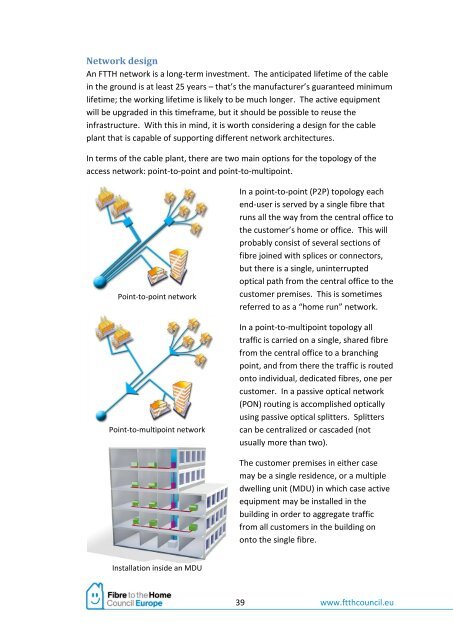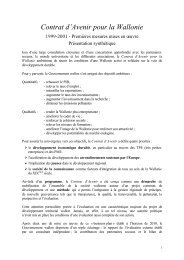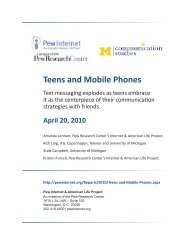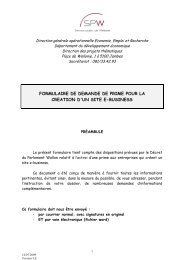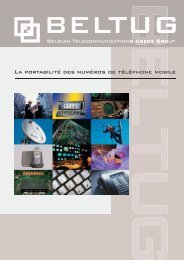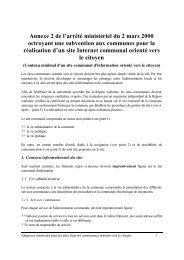You also want an ePaper? Increase the reach of your titles
YUMPU automatically turns print PDFs into web optimized ePapers that Google loves.
Network design<br />
An <strong>FTTH</strong> network is a long-term investment. The anticipated lifetime of the cable<br />
in the ground is at least 25 years – that’s the manufacturer’s guaranteed minimum<br />
lifetime; the working lifetime is likely to <strong>be</strong> much longer. The active equipment<br />
will <strong>be</strong> upgraded in this timeframe, but it should <strong>be</strong> possible to reuse the<br />
infrastructure. With this in mind, it is worth considering a design for the cable<br />
plant that is capable of supporting different network architectures.<br />
In terms of the cable plant, there are two main options for the topology of the<br />
access network: point-to-point and point-to-multipoint.<br />
Point-to-point network<br />
Point-to-multipoint network<br />
Installation inside an MDU<br />
In a point-to-point (P2P) topology each<br />
end-user is served by a single fibre that<br />
runs all the way from the central office to<br />
the customer’s home or office. This will<br />
probably consist of several sections of<br />
fibre joined with splices or connectors,<br />
but there is a single, uninterrupted<br />
optical path from the central office to the<br />
customer premises. This is sometimes<br />
referred to as a “home run” network.<br />
In a point-to-multipoint topology all<br />
traffic is carried on a single, shared fibre<br />
from the central office to a branching<br />
point, and from there the traffic is routed<br />
onto individual, dedicated fibres, one per<br />
customer. In a passive optical network<br />
(PON) routing is accomplished optically<br />
using passive optical splitters. Splitters<br />
can <strong>be</strong> centralized or cascaded (not<br />
usually more than two).<br />
The customer premises in either case<br />
may <strong>be</strong> a single residence, or a multiple<br />
dwelling unit (MDU) in which case active<br />
equipment may <strong>be</strong> installed in the<br />
building in order to aggregate traffic<br />
from all customers in the building on<br />
onto the single fibre.<br />
39 www.ftthcouncil.eu


